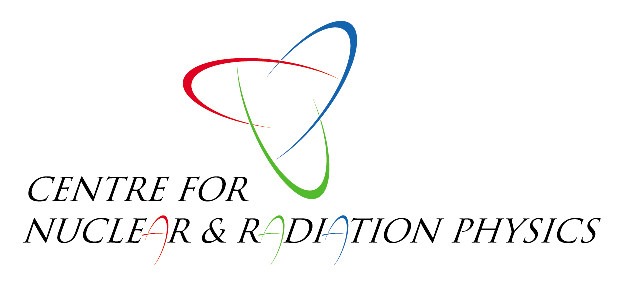

Reaction codes:
Transfer Reactions
TWOFNR is a rather general (legacy) direct reactions code that evolved from the code
TWOSTP authored by M. Toyama and M. Igarashi. The computer program TWOSTP
calculates the scattering differential cross section for general form of the distorted wave
Born approximation up to second order. Namely, one-step and two-step processes of
the reaction can be calculated. TWOFNR is a finite-range generalisation of this code.
The full version of the code is available but is now unsupported (to my knowledge).
The documentation for this code can be found here.
The FORTRAN source code is also available here.
A shortened version of the code TWOFNR (Surrey) calculates only one-step transfer
reactions using the DWBA or the Johnson-Soper/Johnson-Tandy adiabatic approximation
for deuteron breakup effects with the Zero-range or Local Energy Approximation (LEA)
treatment of finite range effects. A front-end code FRONT has been written that generates,
interactively, the data sets for a variety of light-ion induced transfer reactions, including
having a selection of built-in phenomenological and microscopic (nucleon) optical potential
choices. The input data set produced has a format very similar to that detailed in the
TWOFNR documentation. These codes are updated occasionally as new options are
included.
The format of the input data set can be found here (as created by the front-end code).
The (self-documented) FORTRAN of the front-end code FRONT can be found here
The TWOFNR (Surrey) FORTRAN source code is available here
The most current versions are designated twofnr20 and front21
>>> The most recent update and posting was made in November 2023 <<<
Nature of recent updates:
Minor corrections were made to the recent implementation of the Koning-Delaroche global
nucleon optical potential as an option. The facility to include an imaginary spin-orbit term
in the folded (Watanabe and Johnson-Tandy adiabatic) deuteron potentials was also
included. The 3He global potential of Liang et al. (J Phys G 36 (2009) 085104 has been
added to the set of built-in potentials for the relevant reactions.
Changes are made to options for the reading of wave functions from external files. These
include the option to allow the reading of distorted waves with tensor couplings, ktout(i+2)=4
and 5. All spin-observables are also
uncommented and are now all written to channel 20.xx
As a result, output files for the rotated coordinates option (m-substates) are
also renumbered
and are now changed as follows: 20
becomes 40, 19 becomes 39, etc.
Many minor changes and options in Versions 18, 19. Output of
files to allow coherent
mixing of transfer amplitudes (usually when targets with spin) is also added as an option.
Version 20 allows a radial sensitivity analysis for all cases. Sensitivity test choice is signalled
by a value of ktout(10)=8. The bound state form-factor is set to zero beyond a given Rmax (if
Rmax positive) or for R less than Rmax (if Rmax is negative). The Rmax value is read on fort.82
Version 21 includes additional nucleon transfer reactions options in the front end code.
If you download the files and find them useful, and would like to be informed of updates,
then if you send me an e-mail I will inform you as and when there are new postings.
Citation: Use of the codes should be referenced as:
J. A. Tostevin, University of Surrey version of the code TWOFNR (of M. Toyama, M. Igarashi
and N. Kishida) and code FRONT (private communication).
This webpage is at: http://nucleartheory.surrey.ac.uk/NPG/code.htm
Data set trailers xxx (e.g. tran.xxx) are specified when created by the front-end code.
Output from TWOFNR is the centre of mass (21.xxx), laboratory frame (22.xxx) and the
inverse kinematics heavy (23.xxx) and light (24.xxx) fragment laboratory frame cross
section angular distributions. More reaction options have been included.
The diffuseness parameter of the surface imaginary part of the KD02 proton optical potential -
if used in constructing the deuteron adiabatic or Watanabe folding potential - was corrected
(May 2021). Noted by Michael Dinmore/Natasha Timofeyuk (Surrey).
Elastic Scattering
Documentation: program DDTP (R. P. Goddard) for deuteron elastic scattering.
Additional tools are available linked here.